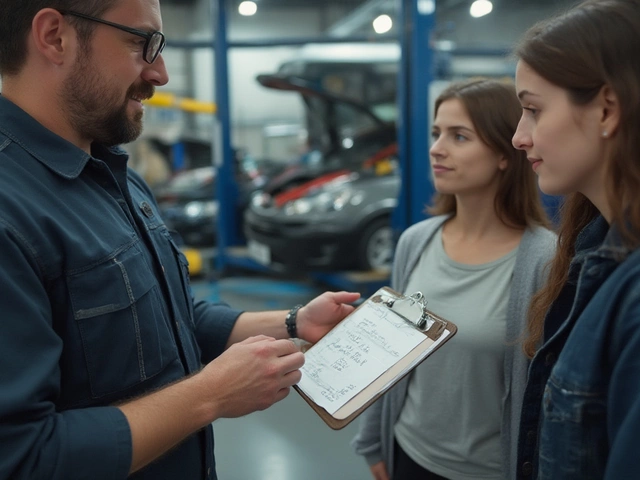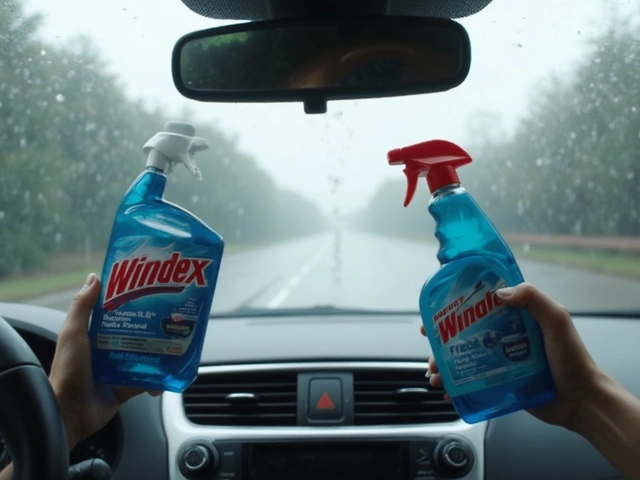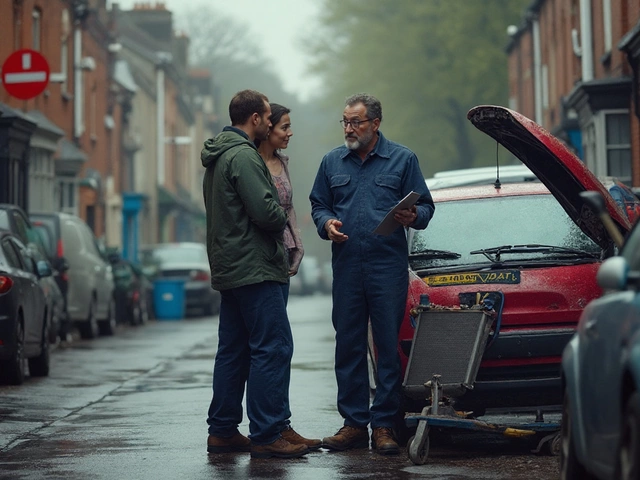There’s a dirty little secret under most car bonnets. It’s not some complex electrical fault or a squeaky belt. I’m talking about that humble air filter, quietly shuttling some of the cleanest air your engine gets. Now, marketing paints a shiny picture of ‘premium’ air filters—fancy names, flashy colours, promises galore. But what’s really happening when you swap your standard filter for a premium one? Are you tuning your engine, saving pounds at the fuel pump, and breathing sweet alpine air—or just handing over extra cash for hype?
What Makes a Premium Air Filter Different?
Pop open almost any car bonnet, and you’ll spot the air filter tucked away, often caked in dust after a few months of city driving or countryside jaunts. Standard air filters are usually made of pleated paper. They trap dirt, pollen, and general road debris. Premium air filters, though, go further. They’re often built with high-grade cotton, synthetic fibres, or even oiled gauze sandwiched between wire mesh. You’ve probably seen brands like K&N, Mann-Filter, BMC, or Bosch splashed on boxes at Halfords or the local motor spares shop. These products promise better airflow, longer life, and more thorough filtration—sometimes all three. But how different is this, really?
The punchline: materials matter. Cotton or synthetic filters can be washed and reused, lasting 80,000km or more, while paper ones are binned after 15,000–25,000km. According to lab tests published by ADAC in Germany and reports from Consumer Reports in the US, premium filters do let more air through, especially when clean, which does help your engine breathe. But it’s not just about how much air gets in; it’s how well dirt stays out. Not every high-flow filter captures pollen or fine dust as well as top-quality paper. The devil is in the detail: sure, your engine will love more airflow, but your lungs (and wallet) might not love more particles floating about. A recent test by the UK’s Transport & Environment group showed up to a 10% increase in fine dust particles passing through some aftermarket performance filters compared to OEM paper types. It pays to check the specific filter’s particle rating.
Beyond engine air, there’s another side of the story—the cabin filter. On the way to Glastonbury last year, I swapped my tired pollen filter for a carbon-activated Mann unit. The difference was clear—less musty smell, noticeably less dust on the dashboard, and fewer sneezes on country lanes in spring. Premium cabin air filters often add extra layers like activated charcoal or even HEPA-type filtration. These don’t just block out pollen and dust; they also tackle NOx fumes, brake dust, and even odorous molecules from outside. That’s a real plus, especially if you’re sensitive to air quality or drive with kids or pets.
Here’s a chart comparing common air filter materials and their main properties:
| Type | Main Material | Reusable? | Particle Filtration (%) | Typical Lifespan (miles) |
|---|---|---|---|---|
| Standard Paper | Pleated Cellulose | No | 97-99 | 10,000–15,000 |
| Premium Cotton Gauze | Oiled Cotton Layers | Yes | 96-98 | 30,000–50,000 (with cleaning) |
| Synthetic/Non-Woven | Polymer Fibres | Sometimes | 98-99 | 15,000–30,000 |
| HEPA Cabin | Glass Microfiber | No | 99.97 (at 0.3μm) | 15,000–20,000 |
Bottom line? A premium filter gives better performance and durability, but not always better particle filtration—sometimes, the opposite is true. Make sure you’re getting gains where you need them.

What Does ‘Premium’ Actually Mean for Your Car?
Let’s talk cold, hard performance—and what actually happens with a beefed-up filter. The air filter’s first job is to protect your engine. Ever seen engine internals with scratched cylinder walls or scored pistons? That’s what a bit of sand or dirt does without proper filtration. The right filter means the difference between smooth running and an engine slowly eating itself from the inside. Every car’s manual tells you when to change your filter, for a reason: neglecting this can cost you hundreds, or even thousands, in repairs.
Now, what about better performance? Some car enthusiasts swear by the throttle response and (slight) boost in horsepower when they fit a high-flow air filter. There’s a kernel of truth here. Studies by the UK’s Which? magazine in 2023 found an average 1-3% bump in power on small hatchbacks and up to 6% on performance-tuned engines when switching to some quality reusable cotton filters. Not world-changing, but if you like a sharper feel, that’s noticeable. The flip side is that not every vehicle benefits, especially if your fuel mapping or air flow sensors aren’t tuned for such filters. Plug a highly restrictive air filter into a high performance turbo car like a VW Golf R, and sure, you might free up a few ponies. Slap it in a 1.0L Nissan Micra, and you’ll be lucky to feel much at all—especially if that engine spends its life under 3,000 rpm.
Let’s not forget fuel economy. The theory is simple: less airflow restriction equals more efficient mixing of air and fuel, which means you burn less per mile. But studies tell a mixed story. Bosch’s 2022 tests in European city driving saw high quality reusable filters net about 2–4% fuel savings versus clogged paper filters—but on a spotless new filter, the difference dropped to near zero. Really, you feel the savings most as your factory filter clogs up with debris. Turn up the airflow with a reusable cotton unit, and over 30,000 miles, you might save half a tank or so. Mind, premium filters usually cost two to five times a regular one, so in terms of cold cash, you’ll break even at best unless you’re logging motorway miles every day.
Noise—yes, that’s a thing, too. High-flow filters may bump up induction sound; for some, that throaty intake growl is music, for others, it’s just more cabin noise. Worth thinking about before you say yes at checkout.
For health’s sake, think about the cabin filter, too. On London’s busiest roads, particulate counts get sky-high. Public Health England published a stat in 2024 showing that 1 in 6 city dwellers report breathing irritation or headaches triggered by in-car air quality. Swap to a high-spec cabin filter with activated carbon or HEPA-grade media, and you genuinely notice the difference. Less PM2.5 and diesel fume sneaking into the car—especially if you have allergies or drive through neighbourhoods with heavy industry. Kids, elderly passengers, and anyone with asthma will thank you. Even many Uber drivers now carry spare premium cabin filters and swap them every 10,000 miles to keep that fresh-air feeling over summer’s city haze.

How to Choose—And When is It Worth the Money?
With all those choices and marketing terms flying around, is it actually worth paying for that ‘premium’ air filter? It depends on your situation and what you want out of your car. If you drive short city hops, change your filter as recommended, and don’t notice any performance lag or smells, the standard filter does a great job for most. If you pile on miles, hit dusty lanes, or have a performance vehicle, there’s a stronger case for an upgrade.
Here’s what the savvy driver looks for when buying a premium filter:
- Filtration Efficiency: Look for third-party test results. Good brands publish their particle rating; if they don’t, ask yourself why.
- Material: Synthetic or cotton filters last longer and can sometimes be washed, saving waste and some money in the long run.
- Cabin vs Engine: Don’t skim on cabin filters if you have allergies, live in the city, or carry pets and family.
- Cost Versus Benefit: Weigh the filter’s price against how long it’ll last and whether your driving style actually gains from better airflow.
- Warranty and Brand: Avoid knock-offs; stick to well-known brands, especially for high-end cars where filtration matters more.
A DIY tip from someone who’s spent far too many weekends under the hood: swap filters with gloves, check for dust on both sides, and note the air flow direction arrows. If your new so-called ‘performance’ filter lets light through with no resistance, it might be letting in too much dust as well—double check the specs.
One thing rarely mentioned—air filter housing quality. Premium filters help, but cracked or poorly sealed housings let unfiltered air in anyway. Check the plastic housing for warps, cracks, and missing latches each time you swap. About 8% of failed MOTs in the UK in 2024 flagged air filter or housing damage as a root cause of emissions issues. That’s not just theory; I had a mate’s Fiesta flagged on the DVSA emissions check last Autumn, only to find a squirrel-nibbled corner on the filter housing. Fix that, and suddenly everything reads normal on the emissions tester.
If you want to geek out, some brands now track airflow sensor data via app, letting you see if your engine actually breathes easier with a new filter. This tech is just emerging—BMW’s 2024 models rolled out iDrive-based filter health indicators, telling you when efficiency drops below optimal. Handy, though you still have to get your hands dirty swapping out the filter.
Here’s a quick reference table on likely savings and costs across common scenarios:
| Car Type | Driving Style | Premium Filter Gains | Annual Cost Difference |
|---|---|---|---|
| Compact City Car | Urban, short trips | Negligible performance/fuel benefit; better cabin air with premium cabin filter | +£10 to +£25 |
| Family Estate | Mixed use, long trips | Long-life filters save money, slightly better mileage; cleaner air | Neutral to +£30 |
| Performance Car | Sporty driving, rural roads | Noticeable throttle response, more power, must maintain regularly | +£30 to +£100 |
| Diesel Van | High mileage, heavy dust | Much longer lifespan; protects engine in tough environments | Neutral (breaks even if kept long-term) |
If you run a van or taxi all day, premium engine and cabin filters pay off with fewer swap-outs and less downtime. If your commute is Bristol to Bath and back in motorway traffic, a better cabin filter means you inhale less pollution stuck behind buses and trucks.
The shorthand: A premium air filter pays off most when you value engine longevity, want a bit more power in a hot hatch, or really feel the effects of bad air inside the car. For many, sticking to regular filter changes does 99% of the job. But if you care about driving experience—or the air your family breathes—upgrading is a practical, tangible step. I’m sticking with my Mann HEPA cabin filter through allergy season, and my Golf’s cotton gauze filter keeps the engine happy all year. For me, that’s worth the small price of admission—and a bit of satisfaction knowing the air’s as clean as it can be, from Bristol’s back lanes to the busy M32.





